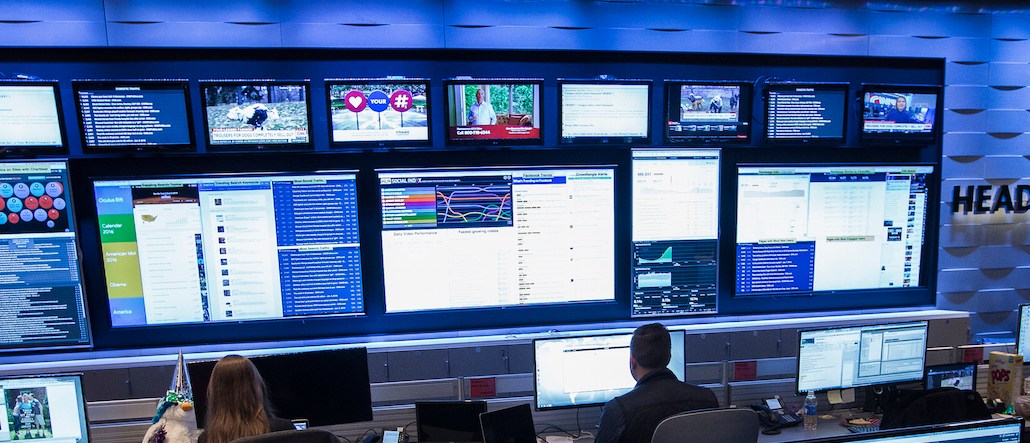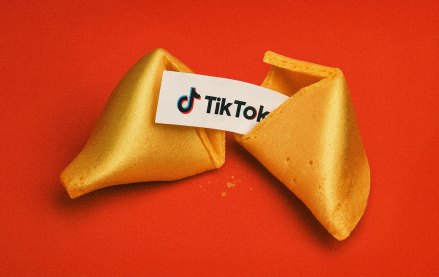Save 50% on a 3-month Digiday+ membership. Ends Dec 5.

CNN International has been on a mission to evolve its digital commercial offering. The goal is to move away from banner ads and click-based reporting, boost branded content revenue and ultimately assert itself as a media partner that can unlock real business insights for advertisers.
It’s a strategy that’s paying off: 54 percent of all revenue now comes from deals that incorporate branded content made by CNN International’s in-house creative agency, CNN Create, which has 20 permanent staff. This team creates everything from video and editorial that sits across CNN’s own channels to off-site content like 360-degree videos for Facebook and Snapchat content.
Driving the 9-year-old creative agency’s productivity spurt this year is its new advanced data monitoring service, AIM, which now runs through all its clients’ on- and off-site campaigns.
Launched seven months ago, AIM tracks data to identify the right audiences for campaigns and informs any branded-content creation. It then monitors campaigns so that creative can be dynamically adjusted both on and off CNN platforms if needed. It also provides deeper reporting beyond click-throughs, including dwell times, hover times, engagement and purchasing intent, which combined can give brands real business insights.
Internet security tech company Bitdefender is among the clients using AIM currently for a campaign aimed at raising awareness of the cybersecurity threat in the internet-of-things space. It’s sponsoring a custom CNNMoney video series “Unhackable,” integrated with branded content and a range of rich digital ad formats
AIM is securing better ROI and, therefore, increased advertiser buy-in, according to Rob Bradley, director of data and digital revenue for CNN International Commercial. “Arguably, we wouldn’t have won that money without the creative team,” he said, adding that in terms of revenue it’s “several million” ahead of where it was last year as a direct result. Overall, revenue has increased by “double digits” since AIM was introduced.
The need for a service like AIM is clear: The traditional competitor set for publishers has widened over the last few years, with tech giants like Facebook and Google commanding ever larger chunks of the ad-spend pie. Facebook just revealed it made $6.2 billion in ad sales in the three months to June 2016.
Bradley said that, without a sophisticated data-driven ad sell that uses better creative than standard ads and provides more than blunt reporting metrics like click-through rates, publishers are dead in the water.
“As a global business in western Europe, particularly in London, if you don’t have a smart data strategy, you don’t even get in the room with agencies,” he said. “We used to compete against a handful of large broadcasters. Now we have 40 very serious, sophisticated competitors that range from Facebook and Google to the likes of BuzzFeed and Quartz. So unless we’re offering something incredibly smart, the conversation doesn’t even start.”
Bradley referenced a recent campaign, which ran two months ago with an Asian airline he declined to name, as an advertising partner that has received direct business insights to influence its marketing strategy as a result of the campaign reporting provided by CNN International. The sponsored and branded content campaign ran in North America on CNN’s domestic and international channels, and using AIM the publisher learned that many of the people who saw the campaign have children.
“We fed that back to the brand, and it turned out they’d been considering running a campaign towards kids but hadn’t been sure if it was the right move,” said Bradley. “This gave them confirmation that people with families in North America were interested in traveling to that part of Asia. That’s kind of business insight has real value. You’re not just being a platform or media owner, you’re being an insights and research company as well.”
Bradley believes there are ample creative ways that publishers can monetize beyond standard advertising. So much so, that the team has just run a #beyondthebanner campaign in Asia. “It’s not just about social — it’s virtual reality, chat, Messenger, bots. There are commercial opportunities here both for us to create brands’ own channels and to develop our own,” he added.
To do so, sales teams need to be given the freedom to be creative, he added. Eleven new hires across sales and ad ops, and a new role of commercial product manager have joined CNN International on Bradley’s watch. “Data isn’t a department anymore. It’s no longer two guys who understand a DMP,” he said. “Nor is it this spaceship stuff shrouded in mystery so the people who know it keep it to themselves so they can prove the value of their jobs. You can’t get the most revenue out of it unless it touches everyone from marketing, to sales, to ops, to analytics — everything.”
More in Media

TikTok Shop sheds bargain-bin reputation as average prices climb across categories
An analysis by e-commerce intelligence firm Charm shows average prices climbing across more than a dozen key categories.

Ad Tech Briefing: The Programmatic Governance Council is a bid to reset power dynamics
As tensions over TID and GPID peak, Tech Lab is convening a council to hash out commercial ground rules.

Newsweek is building an AI Mode-like experience to customize homepages for readers
Newsweek is building an AI homepage modeled after Google’s AI Mode to increase engagement and offset declining search referrals.





